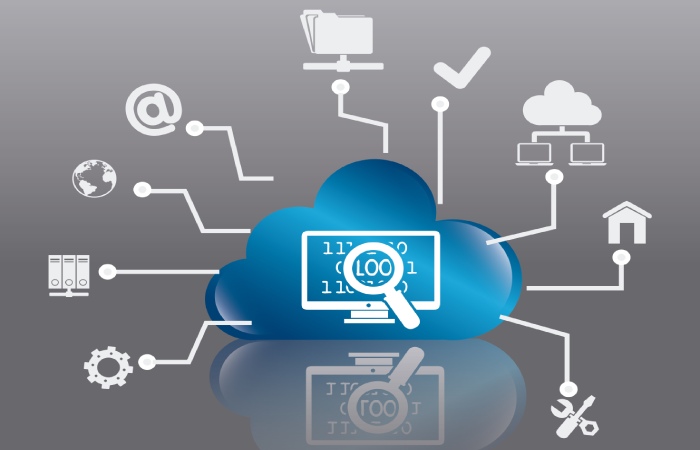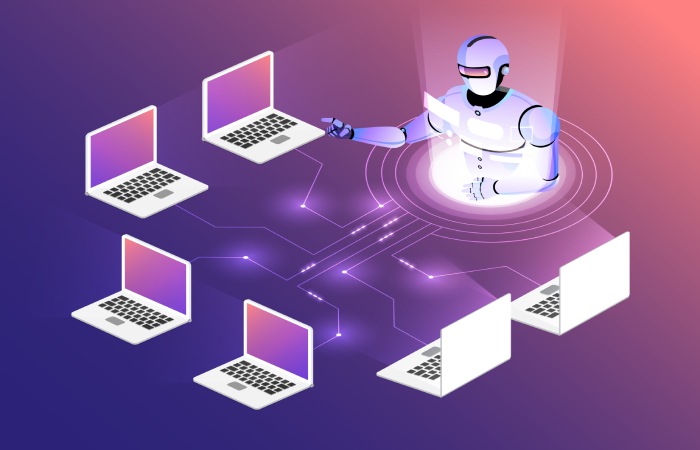Managed services refer to the proactive outsourcing of IT tasks and responsibilities to a third-party provider, enabling businesses to streamline their technology operations while focusing on core competencies. Unlike traditional IT outsourcing, which is often project-based or reactive, managed services emphasize ongoing infrastructure management, performance optimization, and proactive maintenance under a predefined service level agreement (SLA). This approach is designed to maximize system uptime, enhance security posture, and improve operational efficiency.
Providers delivering managed services typically oversee a broad spectrum of functions such as network monitoring, cybersecurity services, and help desk support. By leveraging tools like remote monitoring and management platforms, providers ensure real-time system updates, patch management, and endpoint management to maintain robust IT environments. These services extend across various domains, including cloud management, telecommunications management, and IT asset management, embodying a comprehensive lifecycle approach to IT governance.
Types of Managed Services: An Overview
The diversity of managed services offerings reflects the evolving landscape of information technology and enterprise needs. Key types include:
Infrastructure Management:
Encompasses server management, data center management, and system administration. Leading providers like Hewlett Packard Enterprise (HPE) and Dell Technologies excel in comprehensive infrastructure lifecycle services.
Cloud Management and Multi-Cloud Management:
As organizations embrace digital transformation services, managing cloud environments hosted on platforms such as Microsoft Azure, Amazon Web Services (AWS), and Google Cloud Platform (GCP) is critical. Managed services here include cloud migration, backup solutions, disaster recovery, and multi-cloud orchestration.
Network Monitoring and Network Security:
Providers like Cisco Systems and AT&T Managed Services integrate managed firewall, virtual private network (VPN), and managed detection and response (MDR) solutions, supported by security information and event management (SIEM) systems to monitor threats and enforce IT compliance.
Help Desk and Remote IT Support:
Service desks equipped with helpdesk ticketing systems and remote desktop support tools facilitate timely issue resolution. ServiceNow and Rackspace Technology are renowned for their service desk efficiencies.
Application and Database Administration:
This involves application management, database administration, and software as a service (SaaS) management to ensure seamless business operations.
Mobile Device Management and Managed Print Services:
Endpoint management extends to mobile devices and peripherals, with solutions that enable secure access and print resource optimization.
Common Examples of Managed IT Services in Action
Real-world implementations of managed services illustrate the value organizations derive from these offerings:
- An enterprise partners with Infosys to implement comprehensive cybersecurity services, deploying managed firewall and email security services combined with continuous monitoring via SIEM for threat detection and response.
- A multinational utilizes DXC Technology’s cloud management and disaster recovery solutions leveraging AWS and Azure, ensuring business continuity with robust data backup solutions and cloud migration strategies.
- Wipro‘s remote IT support and help desk support enable proactive maintenance through system updates, patch management, and real-time network monitoring to reduce downtime and boost productivity.
- Fujitsu provides IT asset management and IT infrastructure library (ITIL)-aligned service desk operations, utilizing a helpdesk ticketing system for efficient client onboarding and service fulfillment.
- Capgemini delivers digital transformation services integrating multi-cloud management, application management, and database administration, supported by performance optimization and IT consulting.
Key Players in the Managed Services Industry
Global IT service providers dominate the managed services sector, offering end-to-end solutions tailored for various industries:
- IBM Managed Services: Renowned for hybrid cloud management, network security, and IT governance strategies aligned with business continuity plans.
- Accenture: Specializes in digital transformation services, multi-cloud management, and managed detection and response, integrating advanced IT consulting practices.
- Cognizant: Focuses on infrastructure management, cloud migration, and telecommunications management, complemented by mobile device management.
- Tata Consultancy Services (TCS): Offers a broad portfolio including cybersecurity services, server management, and remote desktop support.
- Infosys: Recognized for its capabilities in IT infrastructure library (ITIL)-compliant processes, help desk support, and software as a service delivery.
- Hewlett Packard Enterprise (HPE) and Dell Technologies: Leaders in data center management, server management, and IT asset management, often collaborating with cloud providers like GCP.
- AT&T Managed Services and Orange Business Services: Provide extensive network monitoring, voice over IP management, and virtual private network solutions.
- ServiceNow and Rackspace Technology: Leaders in helpdesk ticketing system integration, remote monitoring and management platforms, and managed print services.
- Fujitsu, Capgemini, NTT DATA: Known for extensive IT consulting, database administration, patch management, and IT compliance services critical to regulated industries.
How Managed Services Improve Business Efficiency
Leveraging managed services significantly enhances operational effectiveness and resilience for businesses worldwide. The key advantages include:
Cost Efficiency Through IT Outsourcing
By delegating routine IT tasks such as system updates, infrastructure management, and endpoint management to specialized providers, organizations reduce the need for large in-house IT teams and capital expenditures. This model ensures predictable costs aligned with SLA terms.
Enhanced Security and Compliance
Managed detection and response combined with security information and event management equip businesses with real-time threat intelligence and rapid incident response capabilities. Providers assist in maintaining IT compliance with regulatory requirements, minimizing risks associated with data breaches.
Proactive Maintenance and Reduced Downtime
Through remote monitoring and management, continuous network monitoring, and patch management, managed services providers prevent issues before they affect operations. This proactive approach supports business continuity and disaster recovery strategies.
Access to Specialized Expertise and Digital Transformation
Managed services incorporate cutting-edge technologies and IT consulting to facilitate cloud migration and multi-cloud management, ensuring performance optimization across environments. This expertise accelerates digital transformation, enabling agility and innovation.
Improved User Experience and Support
Service desks equipped with helpdesk ticketing systems and remote desktop support ensure efficient client onboarding, swift problem resolutions, and seamless application management, enhancing end-user satisfaction.
Scalability and Flexibility
Utilizing software as a service platforms and telecommunications management solutions, organizations can scale IT resources up or down with evolving needs, supported by managed print services and mobile device management to accommodate a mobile workforce.
Optimized IT Governance
Adopting an IT infrastructure library framework ensures structured system administration, database administration, and performance optimization aligned with business objectives.
In summary, managed services blend technology, process, and expertise, allowing companies to focus on strategic priorities while maintaining a secure, compliant, and high-performing IT environment. Providers such as IBM Managed Services, Accenture, and Tata Consultancy Services continue to innovate and expand their offerings, reflecting the critical role managed services play in the contemporary digital enterprise landscape.
Cost Benefits of Outsourcing through Managed Services
Outsourcing IT functions via managed services provides organizations significant cost advantages, enabling more predictable and optimized IT expenditures. By engaging providers such as IBM Managed Services, Accenture, or Tata Consultancy Services (TCS), businesses gain access to expert IT consulting and infrastructure management without the burdensome capital investments associated with maintaining in-house capabilities. This shift from capital expenditure to operational expenditure enhances budget control, as managed services operate under clearly defined service level agreements (SLAs), allowing for better financial planning.
Managed print services, server management, and telecommunications management are often bundled into packages that reduce the need for multiple vendors, thus lowering administrative overhead. Additionally, incorporating remote IT support and help desk support from vendors like Wipro or Infosys cuts the costs related to staff training and turnover while benefiting from proactive maintenance techniques such as patch management, system updates, and endpoint management. Cloud migration facilitated by providers utilizing platforms like Amazon Web Services (AWS), Microsoft Azure, or Google Cloud Platform (GCP) further leverages software as a service (SaaS) models to reduce hardware expenses and enhance scalability.
Moreover, remote monitoring and management through advanced tools—often integrated with IT infrastructure library frameworks—ensure continuous network monitoring and system administration, minimizing downtime and maximizing performance optimization. These factors collectively translate into substantial savings, especially for mid-sized and large enterprises.
Enhanced Security and Compliance via Managed Services
In today’s evolving threat landscape, cybersecurity services underpin the value proposition of managed services. Companies such as Cisco Systems, Dell Technologies, and Rackspace Technology specialize in delivering comprehensive security solutions including managed firewalls, managed detection and response (MDR), and security information and event management (SIEM). Integrating these features within IT outsourcing agreements strengthens network security, thereby safeguarding organizational data against breaches.
These managed services also address critical IT compliance requirements such as GDPR, HIPAA, or industry-specific regulations by providing consistent IT governance and regular auditing. Services like data backup solutions, disaster recovery, and business continuity planning ensure operational resilience, reducing the risk of business interruption.
Email security services, virtual private network (VPN) management, and mobile device management further mitigate vulnerabilities from various attack vectors. In addition, the helpdesk ticketing systems used by providers ensure swift incident response and clear communication channels during security events. By partnering with established names like Fujitsu or Orange Business Services, organizations enhance their security posture while complying with evolving regulatory frameworks.
Real-World Case Studies Illustrating Managed Services Success
Numerous enterprises have demonstrated the tangible benefits of adopting managed services. For instance, DXC Technology collaborated with a global financial institution to execute comprehensive cloud management and multi-cloud management across Microsoft Azure and AWS environments. This resulted in improved IT asset management, optimized system updates, and reduced operational costs through outsourcing infrastructure management and server management.
Similarly, Cognizant supported a healthcare provider with remote desktop support and application management that enhanced patient data security and compliance through rigorous IT governance practices. The implementation of proactive maintenance, including patch management and endpoint management, helped reduce vulnerabilities and streamlined client onboarding processes.
Another example is Capgemini’s engagement with a retail chain where the integration of digital transformation services expanded voice over IP management and IT compliance adherence. This case also highlighted the efficacy of disaster recovery and business continuity protocols, reinforced by telecommunications management and database administration to ensure uninterrupted service delivery.
Challenges and Considerations When Choosing Managed Services
Despite the many advantages, selecting the right managed services provider encompasses several challenges. One primary concern is defining a well-structured service level agreement (SLA) that outlines accountability, performance metrics, and escalation procedures. Firms must carefully evaluate providers, such as NTT DATA or Hewlett Packard Enterprise (HPE), for their domain expertise, responsiveness, and alignment with organizational objectives.
Integration complexity is another challenge, especially when incorporating IT infrastructure library and IT governance frameworks within existing workflows. Organizations must assess the compatibility of managed services offerings with their cloud migration strategy, telecommunications infrastructure, and IT compliance obligations.
Vendor lock-in presents a risk as well, which is mitigated when opting for providers supporting multi-cloud management and open standards. Businesses should also weigh the quality of remote IT support and help desk support, especially the efficiency of the helpdesk ticketing system and remote monitoring and management tools. Finally, performance optimization and proactive maintenance capabilities are vital to sustain service quality over time.
The Future of Managed Services: Trends and Innovations
Looking ahead, managed services are poised for transformative growth driven by technologies like artificial intelligence, machine learning, and automation. Providers such as Accenture and IBM Managed Services are investing heavily in integrating AI-driven network monitoring and managed detection and response to predict and neutralize threats sooner.
Cloud management continues to evolve with enhanced multi-cloud management platforms and seamless cloud migration processes powered by advancements in platforms such as Google Cloud Platform (GCP) and Microsoft Azure. Software as a service models will further proliferate, encompassing broader application management and system administration functionalities across hybrid IT environments.
There is also growing emphasis on sustainability and energy-efficient data center management, alongside improved IT asset management for mobile device management and endpoint management. Innovations in IT consulting will focus on enabling comprehensive digital transformation services that deliver enhanced business continuity, IT compliance, and telecommunications management through smarter performance optimization.
Renewed focus on service desk automation, voice over IP management, and remote desktop support bolsters help desk support efficiency while maintaining stringent cybersecurity services. As the IT outsourcing landscape becomes more sophisticated, collaboration between enterprises and managed service providers such as Fujitsu, Orange Business Services, or Capgemini will deepen, fostering resilient, scalable, and secure IT infrastructures.
FAQs
What are the key cost benefits of outsourcing IT through managed services?
Outsourcing IT functions lowers capital expenditure by converting fixed costs into operational expenses, reduces the need for in-house IT staffing, and leverages economies of scale from providers. It also cuts administrative overhead by consolidating services like managed print services and telecommunications management into streamlined packages.
How do managed services enhance cybersecurity and compliance?
Managed service providers offer comprehensive security layers such as managed firewall, managed detection and response, and SIEM. They also maintain IT compliance by regularly conducting audits, enforcing IT governance, and ensuring data protection through email security services and disaster recovery plans.
Can small and medium-sized businesses benefit from managed IT services?
Absolutely. Managed services allow SMBs to access enterprise-grade infrastructure management, cloud migration expertise, and help desk support without large upfront investments. This democratizes access to advanced IT tools and expertise, leveling the competitive playing field.
What factors should businesses consider when selecting a managed services provider?
Key factors include the provider’s expertise in infrastructure and application management, ability to support cloud and multi-cloud environments, adherence to SLAs, IT compliance track record, quality of helpdesk ticketing systems, and alignment with the organization’s digital transformation goals.
How is AI impacting the future of managed services?
AI enhances network monitoring and cybersecurity by enabling predictive analytics and automated responses to incidents. It also improves service desk automation, optimizes patch management, and facilitates proactive maintenance, driving efficiency and reducing downtime.
Key Takeaways
- Outsourcing IT functions through managed services yields significant cost savings by shifting to operational expenses and reducing administrative overhead.
- Enhanced cybersecurity services and IT compliance are central benefits of managed services, providing robust network security and regulatory adherence.
- Real-world case studies demonstrate measurable operational efficiencies and improved business continuity achieved through proactive infrastructure management.
- Careful evaluation of SLAs, provider capabilities, and integration risks is essential when selecting a managed services partner.
- Emerging trends such as AI-driven monitoring, multi-cloud management, and expanded digital transformation services are shaping the future landscape of managed services.







